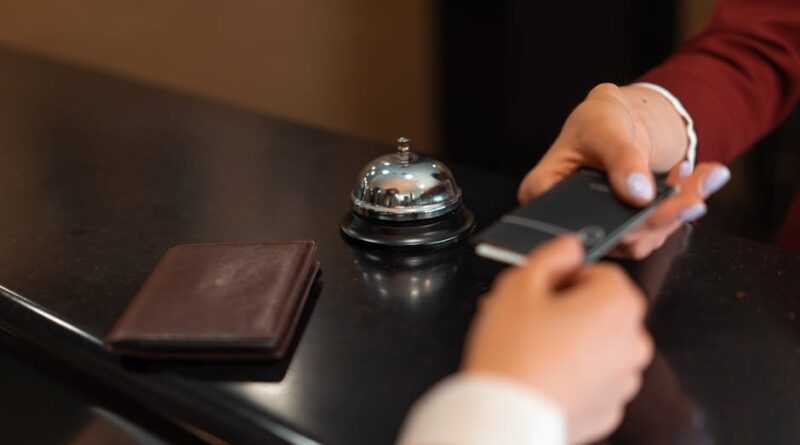Call Forwarding 101: Getting Started
Have you ever missed an important call because you weren’t near your phone? Maybe you stepped out for lunch or were busy in a meeting. Call forwarding can help you never miss a beat. In this article, well explore what call forwarding is, why it’s useful, and how you can easily set it up.
What is Call Forwarding?

Call forwarding lets you direct incoming calls from one phone number to another. it’s like having a personal assistant who ensures your calls reach you, no matter where you are. Picture this: you’re at a caf, enjoying a coffee, and your phone is in your pocket. With call forwarding, any calls to your work phone can ring on your personal phone instead.
Why Use Call Forwarding?

There are many reasons to use call forwarding:
- Stay Connected: Whether you’re at home, at work, or on the go, you can always be reachable.
- Improve Response Time: Quick responses can help you in business and personal life.
- Convenience: You won’t have to switch phones or miss important calls.
According to a recent study, 70% of people feel more productive when they can answer calls on the go. So, why not give it a try?
How Do You Set Up Call Forwarding?

Setting up call forwarding is easier than you might think. Heres a simple guide to get you started:
Step 1: Choose Your Forwarding Number
Decide where you want your calls to go. This could be your mobile phone, a landline, or even a voicemail. Make sure the number is active and reachable.
Step 2: Access Your Phone Settings
For most smartphones, you can find call forwarding settings in the phone app:
- Open the Phone app.
- Tap on the three dots (menu) in the top right corner.
- Select ‘Settings’ or ‘Call Settings.’
Step 3: Enable Call Forwarding
Once you’re in the settings, look for ‘Call Forwarding.’ Here, you will usually see options like:
- Always Forward: Sends all your calls to the chosen number.
- Forward When Busy: If you’re on another call, the incoming call will be forwarded.
- Forward When Unanswered: If you don’t pick up, the call gets forwarded.
Pick the option that suits your needs best and enter your forwarding number.
Step 4: Save Your Settings
Make sure to save your changes. You should see a confirmation that call forwarding is active. Now you’re all set!
Are There Different Types of Call Forwarding?

Yes, there are several kinds of call forwarding options to choose from. Lets break them down:
- Unconditional Forwarding: All calls go to the designated number, no exceptions.
- Conditional Forwarding: Calls forward only when you’re busy, don’t answer, or your phone is off.
- Remote Forwarding: This allows you to forward calls from your phone using a code, even when you’re not near it.
Each type has it’s benefits. For example, conditional forwarding can help you avoid missing important calls while keeping your phone private.
Can You Use Call Forwarding for Business?
Absolutely! Call forwarding is a powerful tool for businesses. It ensures that customer calls are never missed, even if the main line is busy or after hours.
Many businesses use call forwarding to:
- Enhance customer service by providing immediate responses.
- Route calls to specific departments or employees.
- Improve team communication, especially for remote workers.
Many VoIP services also offer advanced call forwarding features that can be tailored to your business needs. Check out reliable VoIP providers to see what they offer.
What Are the Costs of Call Forwarding?
Many phone plans include call forwarding as part of their package, but it’s important to check with your provider. Costs can vary based on:
- Your service provider
- Your phone plan
- The type of forwarding you choose
In some cases, additional charges may apply, especially for forwarding to international numbers. Always read the fine print!
Common Questions about Call Forwarding
Can I disable call forwarding easily?
Yes! You can turn off call forwarding through the same settings where you enabled it. Just select ‘Disable’ or ‘Turn Off’ to stop forwarding calls.
What if I want to forward calls to more than one number?
Most standard call forwarding options allow you to forward calls to only one number at a time. However, some business VoIP services may let you set up multiple forwarding options. Check with your provider for details.
Are There Any Drawbacks?
While call forwarding is handy, there are a few downsides to consider:
- Cost Issues: Forwarded calls might incur extra charges, especially for long-distance.
- Dependence on Service: If your forwarding number has issues, you may miss calls.
- Privacy Concerns: Forwarding to a personal number might make you feel less private.
Weigh these factors before setting up call forwarding to ensure it meets your needs.
Takeaway: Make Call Forwarding Work for You
Call forwarding is a straightforward way to enhance your connectivity. By directing calls to a number you can easily access, you ensure that you never miss important calls. Whether for personal use or to support your business, it’s a valuable tool.
To set it up, just follow these steps:
- Choose your forwarding number.
- Go to your phone settings.
- Enable the type of forwarding you want.
- Save your settings.
Now you’re ready to stay connected! Have questions? Feel free to reach out to your phone provider for more support.
For more information on communication tools, check out our article on VoIP Basics.
With these tips, you can enjoy the full benefits of call forwarding. Happy calling!



